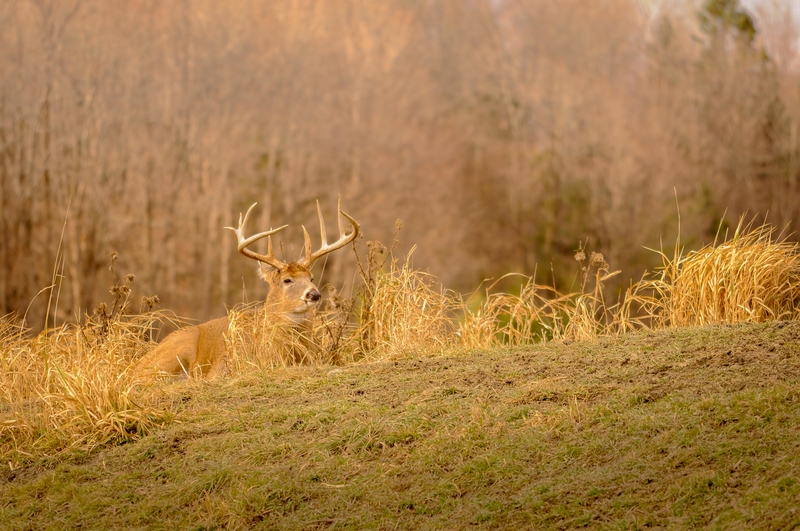Deer are smart and the longer we get into the various forms of deer season, the harder they become to find.
Here are two areas that some hunters only look at if there is no other alternative but almost always hold some deer.
Leeward Ridges
In hilly terrain, smart old bucks have learned to bed near the tops of leeward ridges (leeward means downwind side). They prefer spots where small points or spurs jut out from the main ridge. The best ones are the ones that point in the direction the dominant wind for the area blows.
Thermals begin to rise when the sun comes up and starts heating the valley floor. The wind blowing over the ridge creates a vacuum and pulls the rising thermal up the ridge. The point where the wind and thermals collide is what I call the thermal wind tunnel. Bucks tend to bed right in the thermal wind tunnel about 1/3 of the way down the ridge and look downhill. From this position they have a great advantage of being able to smell from above and below. A smart hunter needs to keep both thermals and wind in mind when setting up.
The biggest advantage of knowing this is that you can eliminate a lot of ground and concentrate on the leeward ridges. You can forget about the bottoms and the tops and all the ridges that are not leeward and end up only having to concentrate on 10 percent of the terrain.
This is also the best place in hilly terrain to catch a buck cruising for does. They will cruise the leeward ridges right in the thermal tunnel checking for does. They can smell the does from above and below and are cruising near where they bed. The smart hunter will pick a leeward ridge during the rut that connects lots of bedding spurs. Look for tight spots along the ridge like at the top of erosion draws, or where rock formations or fallen trees push the bucks thru a tight spot. To an inexperienced hunter, it will seem like the setup should be in the valley. However, sign holds better in the valley and deer leave lots of night sign down there. To kill bucks in daylight, we need to hunt them where they move during daylight.
Swamp and Marsh Islands
Islands in marsh and swamp terrain can have incredible hunting, especially if they are remote, and/or surrounded by shallow water. The islands that support oak trees can have great early season hunting because there are few oaks in wet terrain. The ones on island high ground may be producing the only acorns to feed on in the area. Marsh islands are really easy to see when surrounded by cattails, dogwood or some other low brush. It can be a little trickier in timbered swamps that have trees growing in the wet areas. This blocks the view of the hardwoods on slightly elevated land.
The best islands for me have been ones that taper to a point on the dominant downwind side and have thick cover and good bedding there. Bucks feel safe feeding in daylight because they could smell danger (if any) at the oaks. A smart hunter will set up on a “just off” wind so the buck is under a false sense of security.
The mature buck bedding areas I find on public land are in spots with very little human intrusion. With this in mind, think about the way you look at public land. There ain't much left when you take a map and cross off everywhere people go to hunt. But within those little leftover pieces is where you’ll find the mature bucks hiding. Just don't overpressure them or they’ll be like all the rest.
Living in a bowl, next to the swamp, ignoring either of these two places seems silly if your goal is to actually fell a deer, but a lot of hunters do not want to make the effort or do not realize either is where deer go when the hunting pressure is acute.
To learn some other places deer tend to congregate because hunters tend not to, check out Real Tree.
